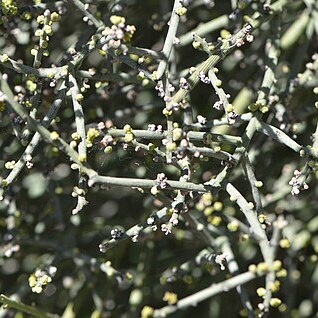Shrub to 5 m high, usually grey-green or olive-green. Branchlets usually divaricate, rigid, finely striate or sulcate. Leaves scale-like, appressed, c. 1 mm long, very early caducous. Flowers in axillary, sessile ovoid clusters or spikes 2–4 mm long. Tepals 5, narrowly triangular, 0.5 mm long. Fruiting receptacle depressed-obovoid, 1–2 mm long, red; drupe ovoid, 3 mm long, somewhat ribbed, scurfy-pubescent; tepals persistent.



